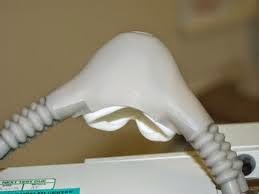Happy Halloween! Here are a few tips from the American Dental Association (ADA) that help scare
away cavities while your kids enjoy their Halloween candy.
- Eat Halloween candy and other sugary
foods with meals or shortly after mealtime. Saliva production
increases during meals and helps cancel out acids produced by bacteria in
your mouth and helps rinse away food particles.
- Avoid
hard candy and other sweets that stay in your mouth for a long time.
Besides how often you snack, the length of time sugary food is in your
mouth plays a role in tooth decay. Unless it is a sugar-free product, candies
that stay in the mouth for a long period of time subject teeth to an
increased risk for tooth decay.
- Avoid
sticky candies that cling to your teeth. The stickier candies, like
taffy and gummy bears, take longer to get washed away by saliva,
increasing the risk for tooth decay.
- Drink
more water. Drinking optimally fluoridated water can help prevent
tooth decay. If you choose bottled water, look for kinds that are
fluoridated.
- Maintain
a healthy diet. Your body is like a complex machine. The foods you choose
as fuel and how often you "fill up" affect your general health
and that of your teeth and gums.
- Avoid
beverages with added sugar such as soda, sports drinks or flavored waters.
When teeth come in frequent contact with beverages that contain sugar, the
risk of tooth decay is increased.
- Chew
gum that has the ADA Seal. Chewing sugarless gum for 20 minutes after
meals helps reduce tooth decay, because increased saliva flow helps wash
out food and neutralize the acid produced by dental plaque bacteria.
- Brush
your teeth twice a day with an ADA-accepted fluoride toothpaste.
Replace your toothbrush every three or four months, or sooner if the
bristles are frayed. A worn toothbrush won't do a good job of cleaning
your teeth.
- Clean
between teeth daily with floss. Decay-causing bacteria get between
teeth where toothbrush bristles can't reach. Flossing helps remove plaque
and food particles from between the teeth and under the gum line
- Don’t be afraid of the dentist: With all of the sweet treats consumed around Halloween, now is a great time for parents to schedule a pediatric dental appointment for their children.
Dr. Matt and the whole Southern Indiana Pediatric Dentistry team love to help keep your children cavity free! Call 333-kids (5437) to schedule an appointment.















